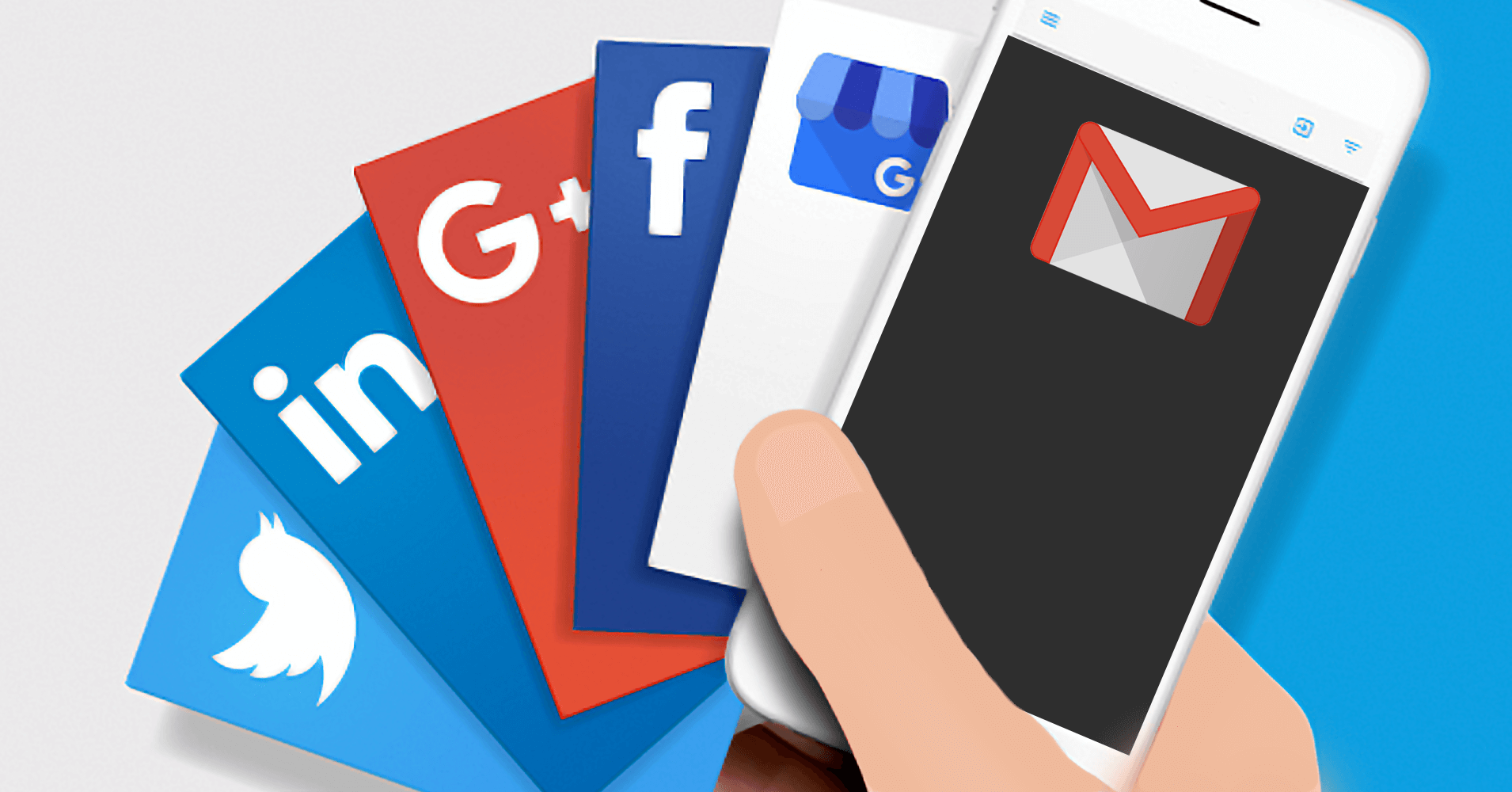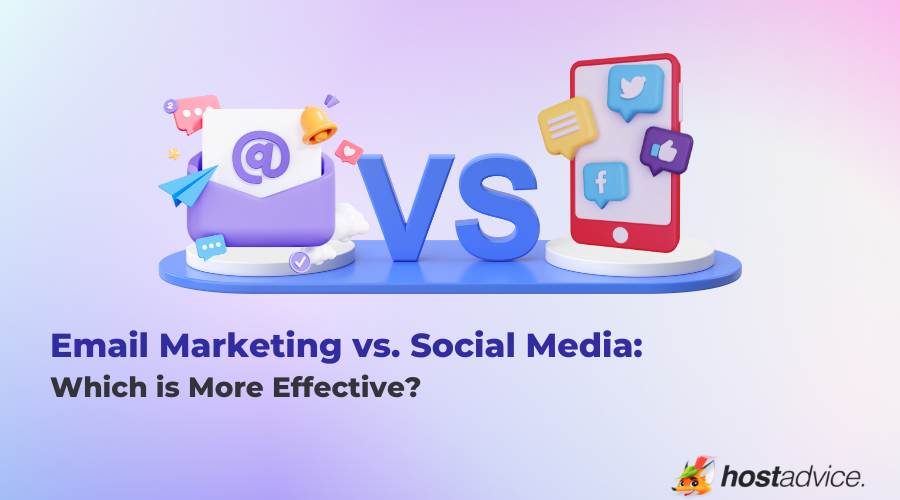Are you struggling to decide where to focus your marketing efforts—email or social media? Both channels promise to boost your brand, but which one actually delivers better results for your business?
Understanding the strengths and weaknesses of email marketing versus social media marketing can save you time, money, and frustration. You’ll discover how each method works, how they connect with your audience, and which strategy can give you the best return on investment.
By the end, you’ll be equipped to choose the right path that fits your unique goals and helps your business grow faster. Ready to find out which marketing tool truly works better for you? Let’s dive in.

Credit: wpmanageninja.com
What Is Email Marketing?
Email marketing sends messages directly to a person’s inbox to promote products or services. It builds strong relationships by delivering personalized content. Compared to social media marketing, email often reaches audiences more directly and consistently.
Email marketing remains one of the most direct ways to reach your audience. It uses email to share messages, offers, and updates with people who have shown interest in your brand. This method helps build a personal connection and keeps your audience informed.
Definition of Email Marketing Email marketing is sending emails to a list of people who have agreed to receive information from a business. These emails can include newsletters, promotions, or product updates. It’s a way to communicate directly with customers and potential buyers.
Key Features of Email Marketing Here are some important features that make email marketing effective: – Personalization: Messages can be tailored to each recipient’s name and preferences. – Automation: Emails can be sent automatically based on user actions or schedules.
– Measurable Results: Track opens, clicks, and conversions easily. – Cost-Effective: Sending emails is often cheaper than other marketing methods. Common Uses of Email Marketing Businesses use email marketing for various purposes. These include: – Sharing news about new products or services.
– Offering discounts and special deals. – Sending reminders or follow-up messages. – Building loyalty with newsletters and updates.
What Is Social Media Marketing?
Social media marketing uses platforms like Facebook and Instagram to connect with customers. It builds brand awareness and drives traffic through posts and ads. This method helps businesses reach many people quickly and interact directly with their audience.
Social media marketing is a popular way to reach people online. It uses social networks to share messages and connect with an audience. This method helps businesses build their brand and attract customers. Definition of Social Media Marketing Social media marketing means using platforms like Facebook, Instagram, and Twitter to promote products or services.
It involves creating and sharing content to engage users and encourage interaction. Key Platforms Used in Social Media Marketing Here are the main platforms used for social media marketing: – Facebook: A place to reach a wide audience with posts, ads, and groups.
– Instagram: Focuses on images and short videos to attract followers. – Twitter: Great for quick updates and customer interaction. – LinkedIn: Used for professional networking and B2B marketing. – TikTok: Popular for short, creative videos targeting younger audiences. Benefits of Social Media Marketing Social media marketing offers many advantages.
It helps brands grow and connect directly with customers. Here are some key benefits: – Increased brand awareness: More people see your business online. – Better customer engagement: Direct interaction with users builds loyalty. – Cost-effective advertising: Lower costs compared to traditional ads.
– Real-time feedback: Instant responses to products or campaigns. – Improved website traffic: Social links bring visitors to your site.
Audience Targeting And Reach
Email marketing targets specific groups with personalized messages, reaching inboxes directly. Social media marketing connects with broader audiences through posts and ads on various platforms. Both methods offer unique ways to engage potential customers effectively.
Email marketing and social media marketing both offer ways to reach potential customers, but they do so differently. Understanding how each targets and reaches its audience helps decide which method suits your needs best. Email Marketing Audience Targeting Email marketing lets you directly contact people who have shown interest in your brand.
It focuses on: – Personalization: Emails can be customized with the recipient’s name and preferences. – Segmentation: Lists can be divided by age, location, or purchase history. – Permission-based: Contacts have opted in, making them more receptive. – Control: You decide when and what to send without outside interference.
This method builds a more personal connection by reaching people who already want to hear from you. Social Media Marketing Reach Social media platforms offer a vast and varied audience. Their strength lies in: – Broad exposure: Posts can reach millions quickly.
– Targeted ads: Platforms allow filtering by interests, demographics, and behavior. – Viral potential: Content can be shared widely beyond your followers. – Real-time engagement: Immediate feedback and interaction with users. These features make social media ideal for expanding brand awareness and engaging diverse groups.
Engagement And Communication Styles
Different engagement and communication styles shape email and social media marketing. Emails offer direct, personal messages. Social media encourages quick, public interactions and sharing. Both have unique strengths depending on audience and goals.
Engagement and communication are key to choosing the right marketing channel. Both email and social media offer unique ways to connect, but their styles differ a lot. Email Marketing Engagement Style Email marketing creates a personal space for messages. It allows brands to speak directly to the audience’s inbox.
This method often leads to deeper, one-on-one communication. Readers can focus without many distractions. Emails can be tailored to specific interests, making the content feel special and relevant. Social Media Communication Style Social media thrives on quick, public interactions. It encourages short, visual, and often informal messages.
Users like to comment, share, and react instantly. This creates a lively conversation that flows fast. Brands can show personality and respond openly, building a community vibe around their content.
Conversion Rates And Roi Comparison
Email marketing often delivers higher conversion rates than social media marketing due to its direct reach. Return on investment (ROI) tends to be better with targeted emails, making them cost-effective for many businesses. Social media helps build brand awareness but may convert slower.
Conversion rates and ROI often decide which marketing method suits a business best. Both email and social media have unique strengths in turning interest into action. Conversion Rates of Email Marketing Email marketing usually has higher conversion rates than social media.
Here are some reasons why: – Targeted audience: Emails reach people who already showed interest. – Personalization: Messages can be tailored to individual preferences. – Direct call-to-action: Clear prompts encourage immediate responses. – Less distraction: Emails focus attention without social media noise.
Conversion Rates of Social Media Marketing Social media conversion rates can vary widely based on platform and approach. Consider these points: – Broad reach: Access to large, diverse audiences. – Engagement focus: Likes and shares build brand awareness. – Visual appeal: Images and videos attract attention quickly.
– Impulse actions: Easy for users to click or buy on the spot. ROI Comparison Between Email and Social Media Return on investment (ROI) is crucial for budget decisions. This section compares ROI for both channels with key factors: Email marketing often delivers higher ROI due to low costs and strong response rates.
Social media ROI depends on ad spend, content quality, and audience targeting. Many businesses find email more cost-effective for direct sales, while social media supports long-term brand growth. Choosing the right mix depends on goals and resources.
Cost And Resource Investment
Email marketing often requires less money but needs time to create strong messages. Social media marketing can cost more and needs constant content updates. Choosing depends on your budget and available team members.
Email marketing and social media marketing both need money and effort. Choosing the right one depends on your budget and the resources you have. Let’s explore how each stacks up in cost and resource investment. Email Marketing Costs Email marketing often requires a smaller budget but has some costs you should know.
– Email platform fees: Monthly or yearly charges for services like Mailchimp or Constant Contact. – Design and content creation: Costs for writing and designing emails. – List building expenses: Money spent on growing your email list legally. – Maintenance and testing: Time and tools needed to test emails and keep lists clean.
Social Media Marketing Effort Social media marketing needs more ongoing work and diverse skills to keep campaigns active. Creating posts, responding to followers, and running ads all take time. You may need a team or tools to handle it well.
Building a strong presence means daily effort and creativity.
Analytics And Performance Tracking
Tracking performance helps compare email and social media marketing results. Metrics like open rates and click-throughs show which method drives more engagement. Analyzing data regularly improves campaign success and reach.
Analytics and performance tracking reveal the true impact of marketing efforts. Knowing which metrics to follow helps marketers refine strategies and boost results. Email Marketing Analytics Email marketing tools provide detailed data on campaign success. These insights help you understand how your audience reacts to emails.
– Open rate: The percentage of recipients who open your email. It shows how well your subject line works. – Click-through rate (CTR): The number of people who click on links in your email. It measures engagement. – Bounce rate: The percentage of emails not delivered.
This indicates list quality or technical issues. – Conversion rate: How many recipients complete a desired action. It reflects the effectiveness of your message. – Unsubscribe rate: The number of people who opt-out. It helps identify content relevance. Social Media Marketing Analytics Social media platforms offer a range of performance metrics.
Tracking these helps tailor content to audience preferences and boost interaction. Analyzing social media performance includes: – Reach: The total number of people who see your post. – Engagement rate: Likes, comments, and shares compared to followers. – Clicks: Number of times users click on links or profiles.
– Follower growth: How quickly your audience increases over time. – Impressions: How often your content appears on users’ screens. Both email and social media provide valuable data. Choosing the right one depends on your goals and audience behavior.
Which Strategy Fits Your Business Goals?
Choosing between email marketing and social media marketing depends on your business goals. Email works well for direct communication and building loyalty. Social media helps reach a larger audience and create brand awareness. Consider your target customers and budget before deciding.
Understanding Your Audience and Goals Choosing the right marketing strategy depends on your business goals and target audience. Knowing who you want to reach helps decide the best approach. Email Marketing for Direct and Personal Communication Email marketing works well when you want to build a personal relationship with your audience.
It suits businesses aiming for: – Customer retention: Keeping current customers engaged with updates and offers. – Lead nurturing: Guiding potential customers through the sales funnel. – High conversion rates: Targeted messages encourage actions like purchases. – Measurable results: Easy tracking of open rates and clicks to improve campaigns.
Social Media Marketing for Brand Awareness and Engagement Social media shines in spreading brand messages broadly and quickly. It fits businesses focused on: – Growing brand visibility: Reaching large, diverse audiences. – Building community: Encouraging interaction and feedback. – Real-time updates: Sharing news, promotions, or events instantly.
– Visual storytelling: Using images and videos to capture attention. Budget and Resources Considerations Budget limits and team skills also affect your choice. Email marketing often requires: – Investment in email tools: Platforms for managing lists and campaigns. – Content creation: Writing clear, persuasive messages.
– Time for segmentation: Dividing audiences for better targeting. Social media marketing usually needs: – Consistent content posting: Maintaining active profiles. – Design skills: Creating appealing graphics and videos. – Community management: Responding to comments and messages. Type of Product or Service The nature of your product impacts which strategy works best.
Email marketing suits: – High-value or complex products: Detailed info helps customers decide. – Subscription services: Regular updates keep subscribers interested. Social media marketing fits: – Trendy or visual products: Fashion, food, and lifestyle items. – Impulse buys: Quick decisions driven by eye-catching posts.

Credit: getwemail.io
Frequently Asked Questions
What Is The Main Difference Between Email And Social Media Marketing?
Email marketing uses direct messages to engage subscribers, while social media marketing builds brand presence on platforms. Email offers personalized communication, and social media focuses on broad audience interaction and real-time engagement.
Which Marketing Method Yields Higher Conversion Rates?
Email marketing generally delivers higher conversion rates due to targeted messaging. Social media drives awareness but often results in lower direct conversions compared to email campaigns.
How Do Costs Compare Between Email And Social Media Marketing?
Email marketing is typically more cost-effective with lower ongoing expenses. Social media marketing may require higher investment for ads, content creation, and platform management.
Can Both Email And Social Media Marketing Be Used Together Effectively?
Yes, combining both boosts reach and engagement. Email nurtures leads, while social media expands brand awareness and drives traffic.
Conclusion
Both email marketing and social media marketing have clear strengths. Email offers direct reach and higher conversion rates. Social media excels at building brand awareness and quick engagement. Choosing depends on your goals, budget, and audience habits. Many businesses find combining both strategies works best.
Test, track results, and adjust your approach regularly. Stay focused on clear messages and consistent contact. Success comes from understanding what fits your unique needs. Keep your audience in mind, and you will see growth over time.


